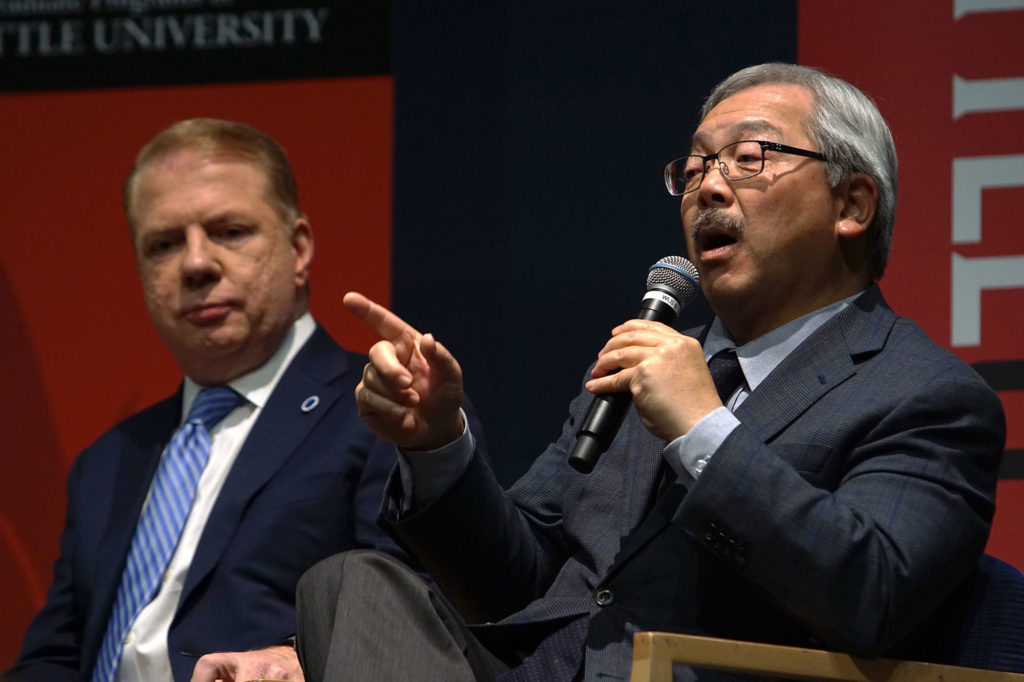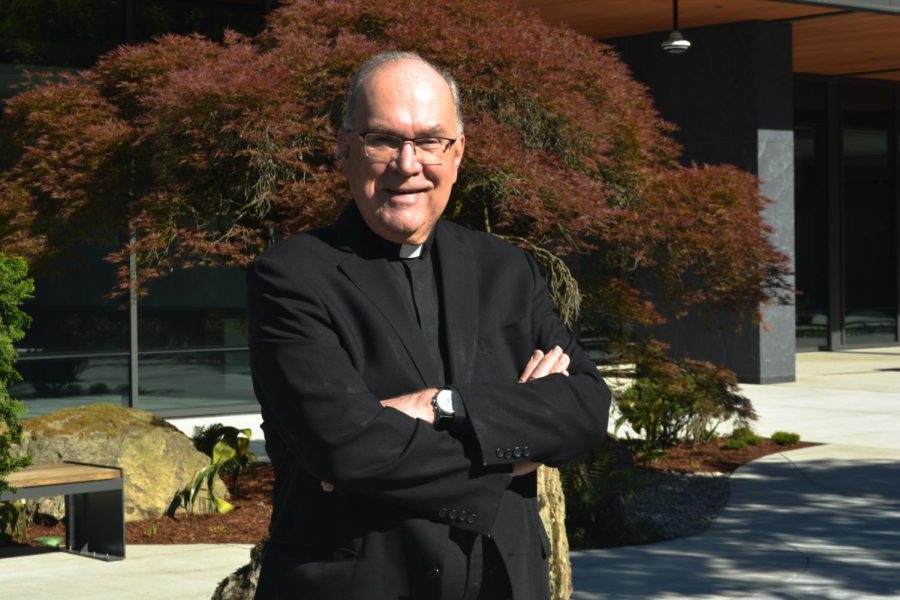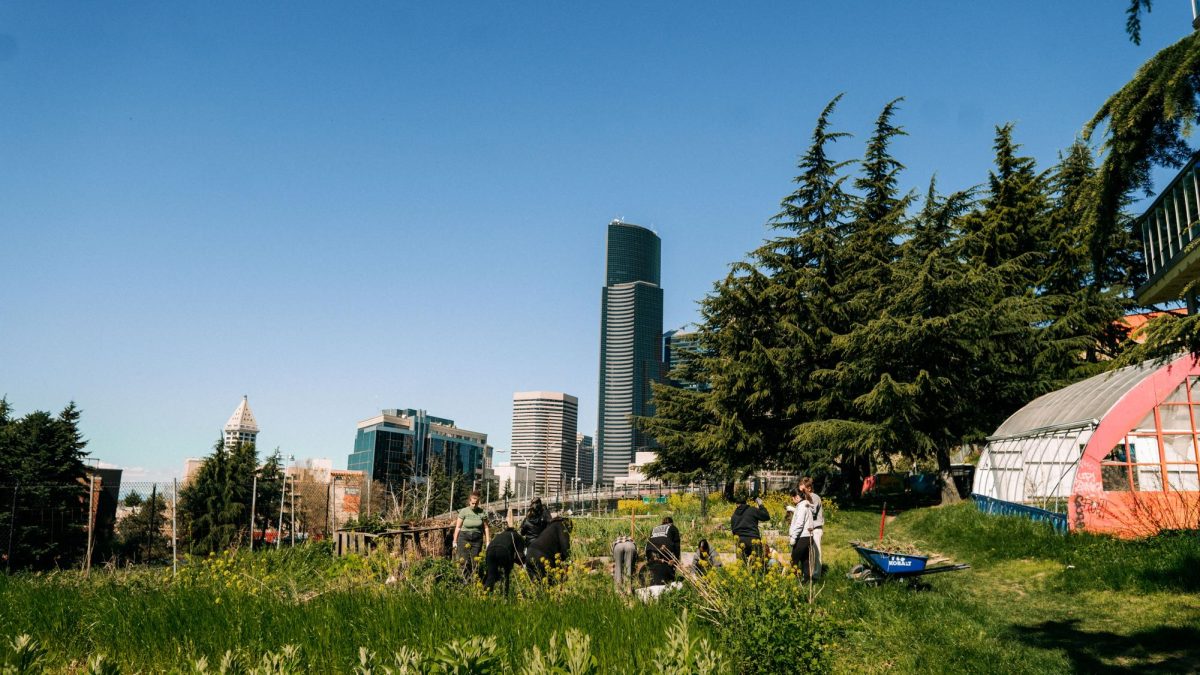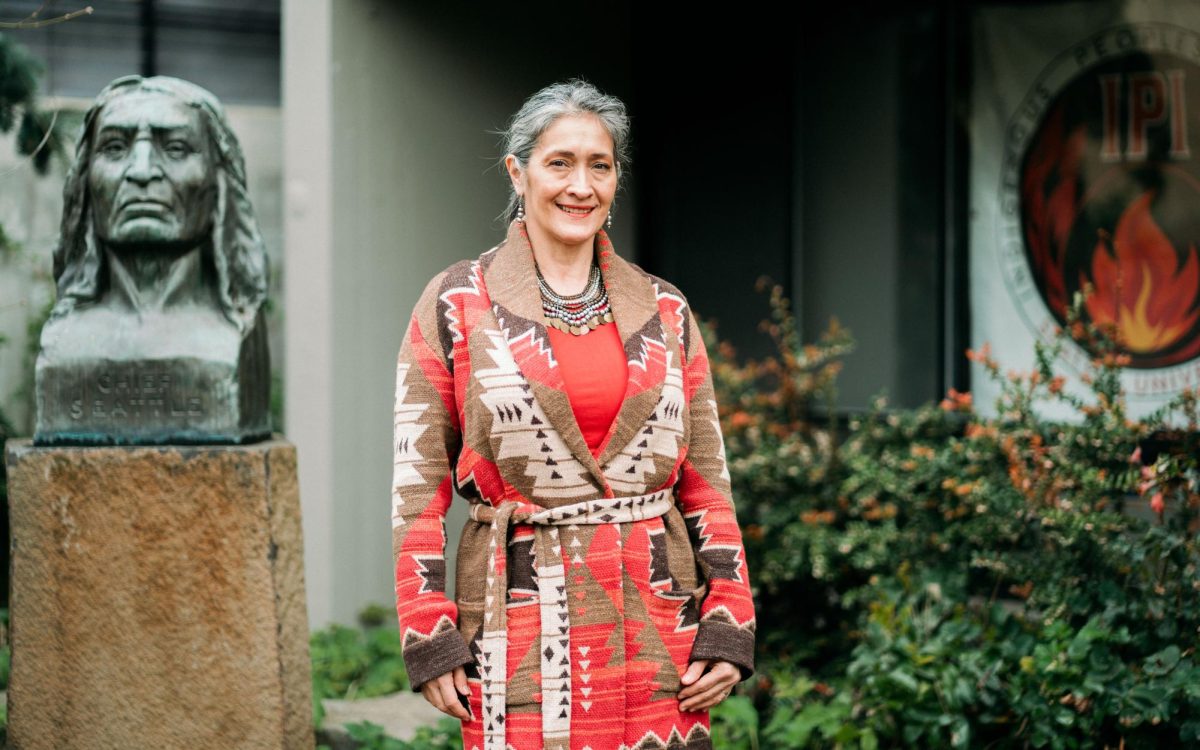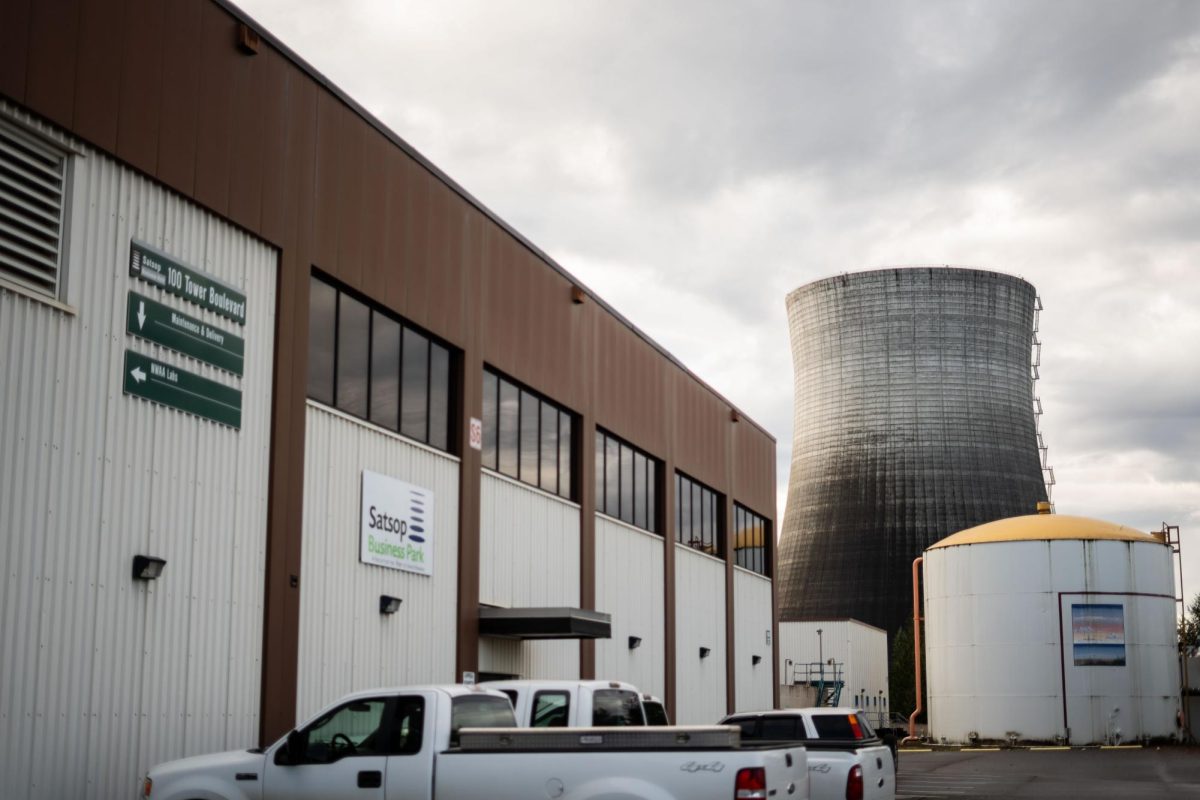Students, staff and members of the Seattle community gathered last Wednesday in Pigott Auditorium to hear how the state of homelessness might change in the new year.
Seattle University’s Department of Public Administration organized the event in which Mayor Ed Murray and San Francisco Mayor Ed Lee discussed future policies on how they would adapt to changes in the federal government.
King County has seen an 84 percent increase in homelessness in the last five years, with a 19 percent increase between 2015 and 2016 alone—this includes veterans and people diagnosed with mental health issues. Roughly a third of Seattle’s homeless people can be taken in by shelters at any time.
Due to the major similarities between the challenges Seattle and San Francisco face, the two mayors have been in continuous dialogue, not only with each other but with leaders of other large coastal cities.
“We’re looking homelessness in the eye,” Murray said. “I absolutely believe that it’s solvable. I do.”
The responsibility of addressing this issue does not simply lie in getting people off the street, both mayors emphasized, but in making sure that they don’t return to homelessness.
Though homelessness is a visible issue, its causes and solutions are not as readily apparent. It is not a phenomenon with one sole cause, but rather, several, including unemployment, addiction, mental health issues or criminal records that could make one ineligible for housing.
Many of these issues that originally made people lose their homes are recurring and run the risk of doing so again, which is why both mayors aim to extend services to include job capacitation, counseling and other forms of personal development.
“You can’t just end homelessness with brick and mortar,” Lee said.
Mayor Murray aims to achieve this vision through a new program called Pathways Home, which will change the previously standing requirements for receiving services. In the past, many services have been reserved for individuals that have spent a significant amount of time without housing, are clean from drugs or alcohol and come alone without a partner or family, but that stands to change under the new system. Pathways Home is intended to reach out to a much broader group and account for the many different demographics that make up Seattle’s homeless population.
“I think it’s also important to recognize the gendered differences involved with homelessness,” said Emily Lampert, junior history major. “A vast majority of homeless women are homeless as a direct result of abusive relationships. Women also face sexual and physical abuse on the street at a much higher rate than homeless men.”
A very major obstacle that has emerged this year is a lack of federal funding Seattle and San Francisco may face for being sanctuary cities. A sanctuary city is one with policies or practices protecting undocumented immigrants, a model that has been seen in major urban centers like Los Angeles, Chicago and New York City. The federal government has recently attacked this stance while also threatening to take away up to $1 billion, severely limiting the services cities like Seattle would be able to provide their homeless with. As a result, Seattle and San Francisco have sought alternative means of raising money for their homeless programs, tapping into their large tech industries and increasing outreach to affluent business owners.
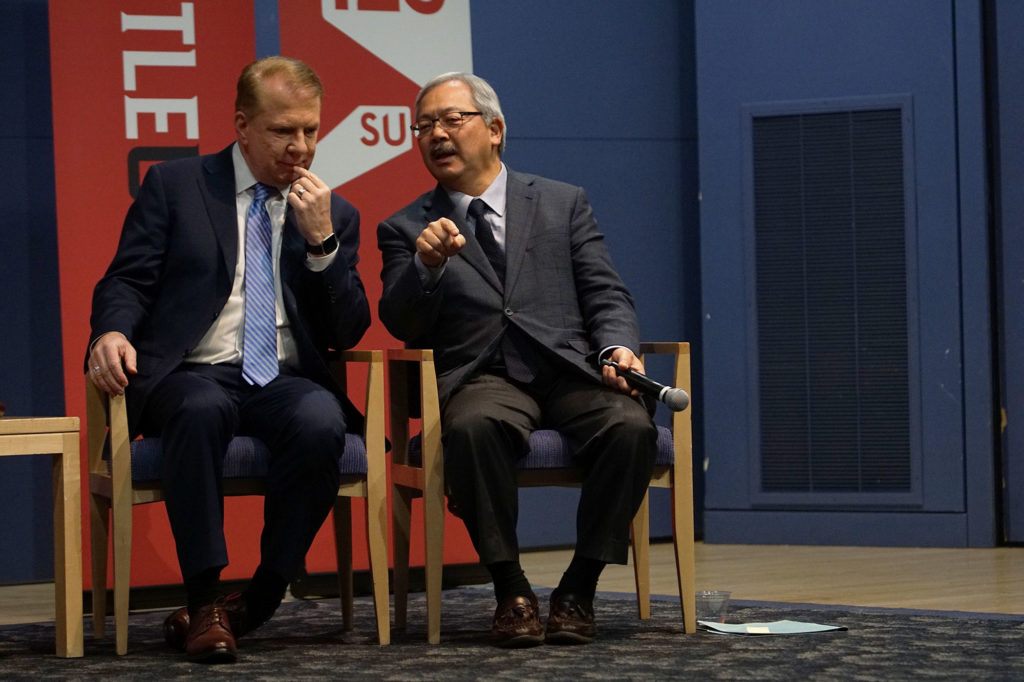
Seattle mayor Ed Murphy and San Francisco mayor Ed Lee speak about the challenges of confronting homelessness last Wednesday.
“What do we do when we lose a friend?” Lee said. “We make new friends and better friends.”
Looking toward the long-term, Mayor Murray discussed the creation of more affordable housing with the possibility of growing into either the outer city or other areas that are not the typical downtown core considered for these housing projects. Murray and Lee both stressed the importance of having affordable housing in mind when it comes to future expansion projects for their cities. Using the rapid expansion of Seattle and San Francisco as examples, they emphasized that there is a difference between growth that is efficient and growth that is conscious of how it will affect people.
For more information on Murray’s initiatives for reducing homelessness visit www.seattle.gov.
Carlos may be reached at
[email protected]






